A Dream Of A Meal At N/Naka
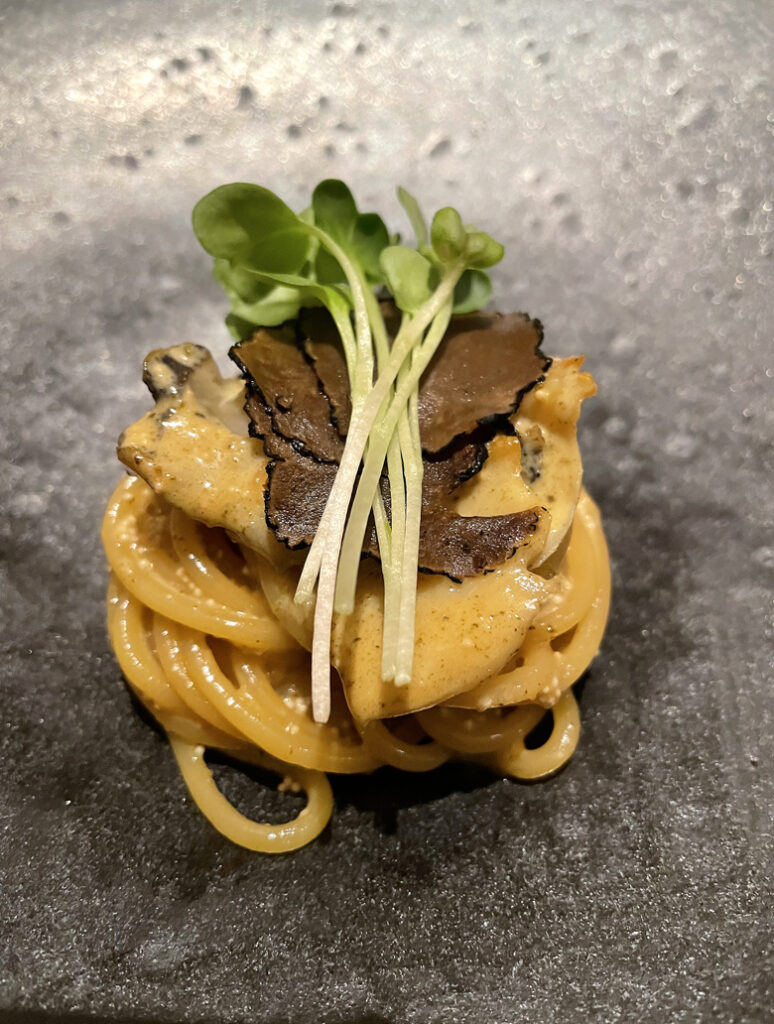
Since learning of it from the first season of Netflix’s “Chef’s Table” in 2015, I have been fascinated by the Los Angeles restaurant, N/Naka.
This Michelin two-starred restaurant opened in 2011 to serve kaiseki, the elegant, multi-course Japanese meal spotlighting ingredients at their seasonal peak in a series of specific cooking techniques.
Back then, it was a type of cuisine that was a rarity in the United States. And even more so when it was crafted by a woman, Chef-Owner Niki Nakayama and her wife, Sous Chef Carole Iida-Nakayama, who dared to put their own thrilling contemporary touches on this classic Japanese haute cuisine.
At all of 26 seats, this restaurant is notoriously difficult to book. While I travel to Los Angeles maybe once a year, I’d never managed to plan the trip in advance enough to even try to snag a table there.
Until two weeks ago. That’s when the stars aligned and Lady Luck was on my side, giving me entree to a dining experience that was nothing short of singularly magical.
You see, N/Naka opens its online reservation bookings once a week at 10 a.m. on Sunday for tables a month later. But sign on right at that second, and you’ll likely find all the reservations gone already and your dreams vanquished — just like that.
After experiencing that disappointment a few times, I started searching online for reservation tips. I came upon a thread that advised staying on the booking site for at least an hour after reservations open, because people will click on a specific reservation that gives a 10-minute window to finalize, only to decide they don’t want it after all. The thread also mentioned that tables of 4 or 6 were easier to come by than for 2.
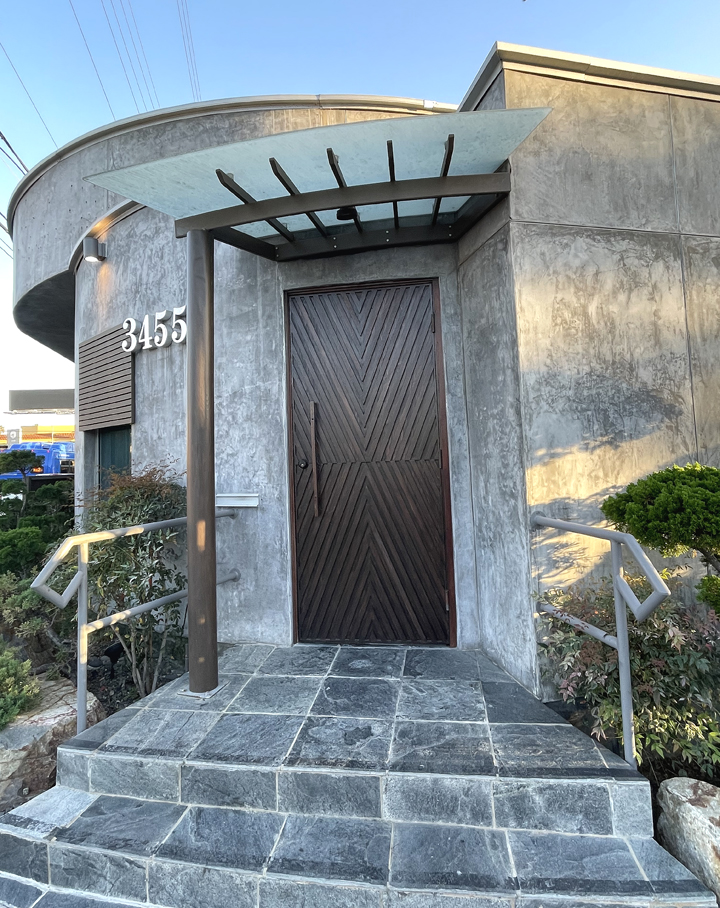
So, for more than half an hour, I kept refreshing the page again and again, growing more apprehensive by the minute. A 9 p.m. reservation for 6 people popped up, tempting me to claim it as I figured I could somehow rope a few more people into trekking to Los Angeles with my husband and me. But I hate dining that late, especially for a tasting menu that lasts 3 hours. So, I bit my tongue, and passed on it, wondering if I had just made a huge mistake.
Just then, another opening showed up. I blinked twice, because I couldn’t believe what I was seeing — a reservation for two at 5:45 p.m on a Saturday no less. I snagged it immediately.
And with that, we were off to Los Angeles — a trip that was built entirely around that reservation.
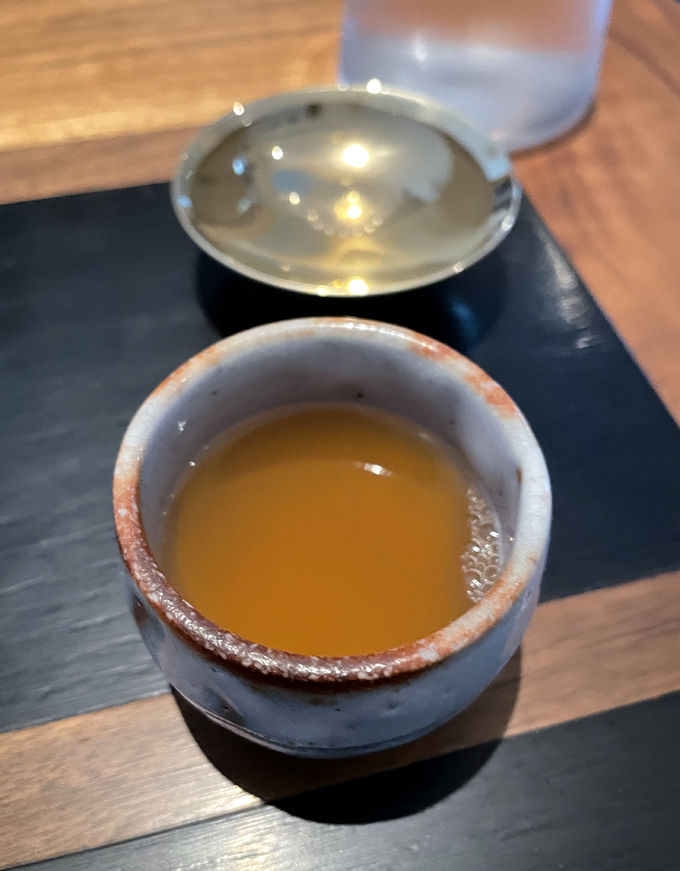
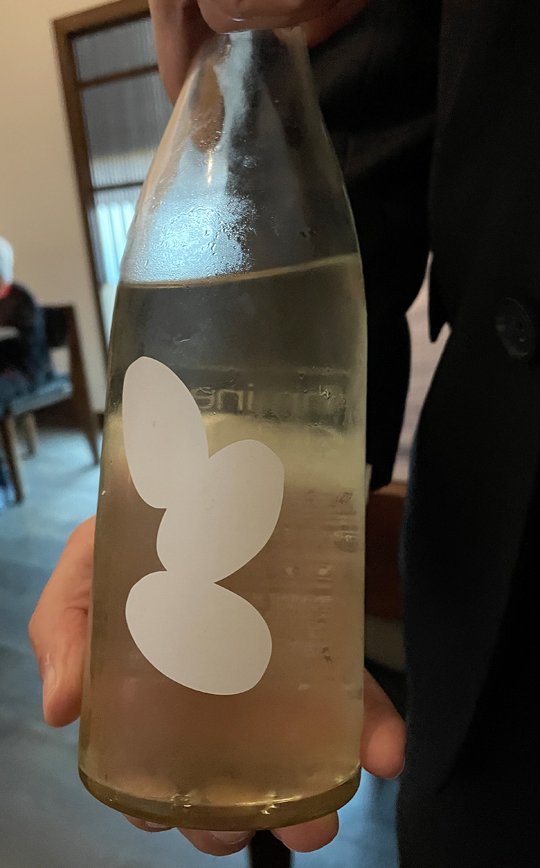
When you arrive at N/Naka, you’ll find no sign on the cement-colored, corner building. At the start, the tone is set by the impeccably sharp-suited waitstaff, and the austere yet serene series of small dining rooms with shoji screen-like accent walls. Ladies are given a thick wool basket to place their purse in on the floor. Glasses of sparkling wine are poured, followed by ceramic cups of chilled, delicately floral hojicha tea with thyme. Your server will welcome you heartily, ask where you’re coming from, and engage in friendly banter that immediately lets you know that while this may be a tasting-menu experience, it’s not one to get intimidated by.
The 13-course tasting menu is $310, of which you will end up prepaying $100 when making the reservation. An optional wine and sake pairing is $175.
There’s no denying it’s a big splurge. But the experience is extraordinary and uncannily personal. Somehow, someway, despite the fact that every diner around you is receiving a seemingly similar menu and experience, you feel as if Nakayama and her team are cooking and caring solely for you. And that’s a rare sensation.
At the end of the meal, the chef comes to each table to chat and to express her thanks. If you happen to provide your mailing address when confirming your reservation online, a note will arrive in your actual home mailbox a few days later. Handwritten by Nakayama, it expresses gratitude for your visit and actually alludes to your specific conversation with her that night. My husband was floored.
Who does this?
The food at N/Naka is equally precious — not in the tweezer-fied, overly done sense, but in the detail and thoughtfulness that goes into each dish that makes you feel every ounce of care that went into it.
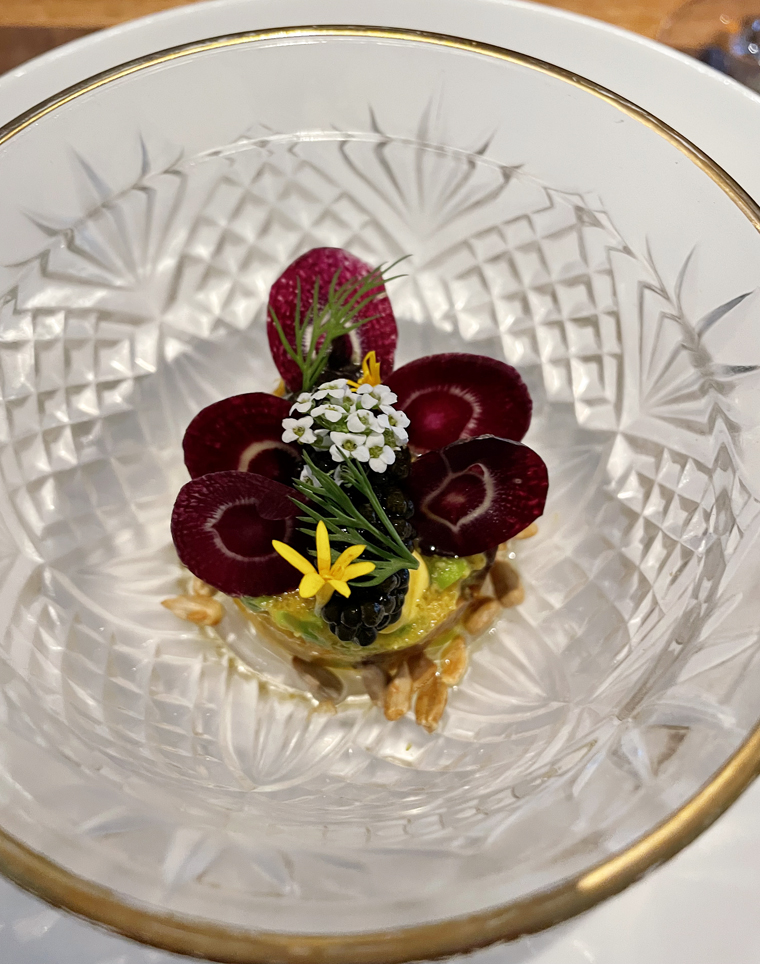
Kaiseki follows a set trajectory of courses, starting with sakizuke or appetizer with sake. In this case, it was Ohmine 3 Grain sake, with floral, faintly Muscat-like sweetness and freshness. It was paired with a soft, chunky parfait of sweet English peas, carrots and butternut squash, all crowned with caviar, and accented with kombu oil, sunflower seeds, and tosazu, a saucy mix of dashi, soy sauce and mirin. Finished with pretty petals and served in a gold-rimmed crystal bowl, it made you feel like royalty.
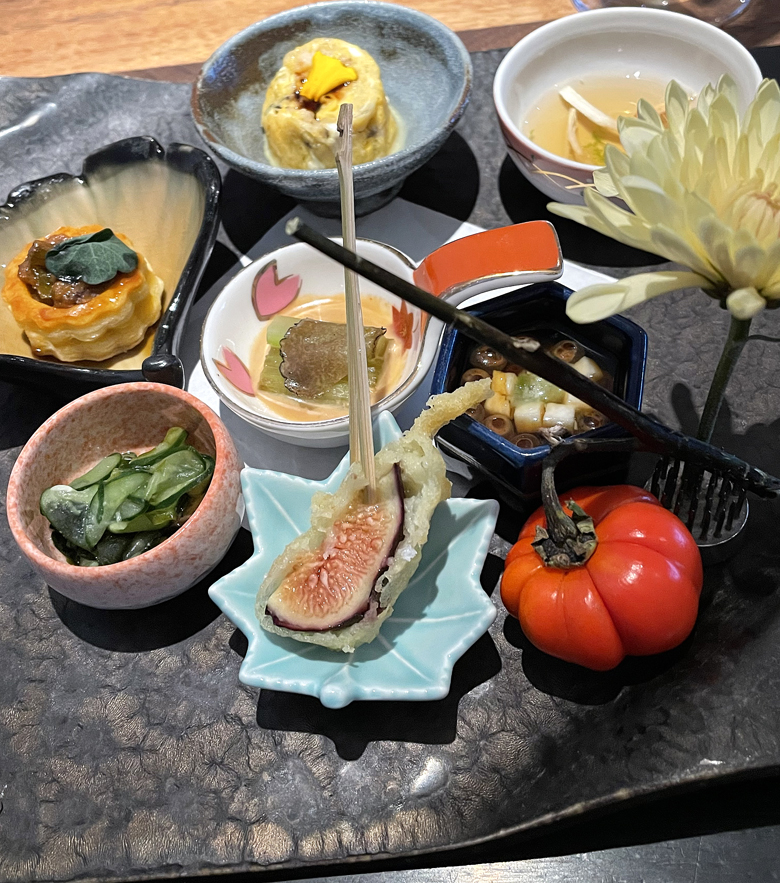
Then comes zensai, a dazzling tableau of tiny dishes that included a woodsy, pine-tasting matsutake tea; the softest egg omelet with spiny lobster; a teeny, golden Wagyu puff pastry that reminded me of a gourmet version of a Chinese curry puff; paper-thin pickled cucumbers; celery given new glory with a truffle vinaigrette and aged miso; pickled mountain yam with salmon roe; and fig tempura. I don’t know why more people aren’t battering and frying figs this way, but they should because there is something to be said for a squishy, jammy fig enjoyed warm enveloped in lacy crispiness.
When the server poured the 2021 Stolpman Vineyards Ballard Canyon Roussanne “Uni,” a rich wine with notes of pear and a hint of salinity designed specifically to match with sea urchin, one immediately knew what the next course promised.

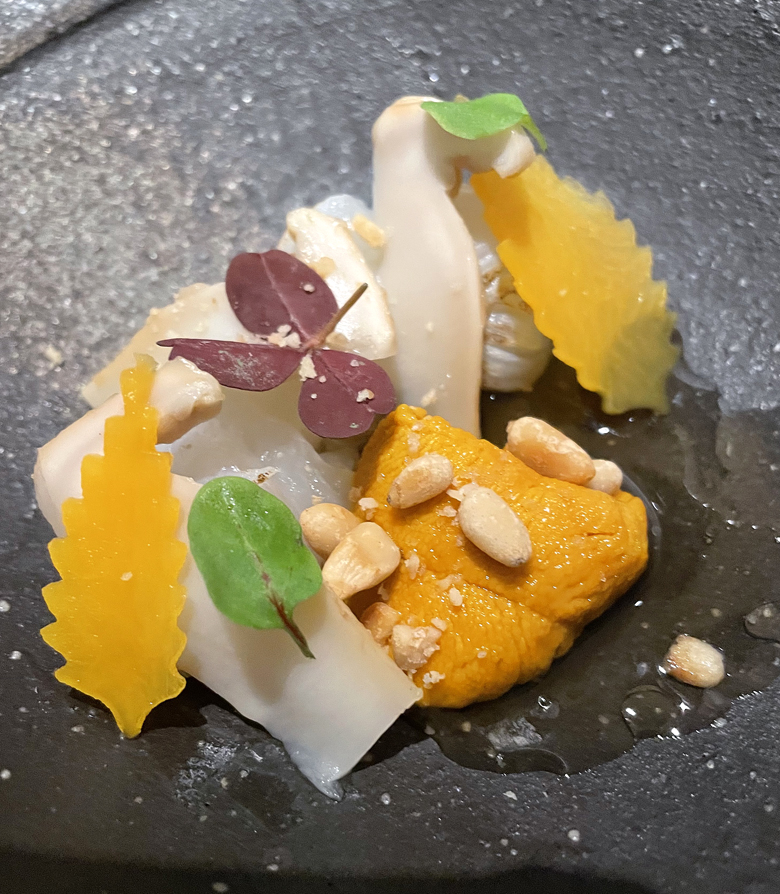
Sure enough, Santa Barbara urchin was front and center with spiny lobster, and slices of matsutake finished with Japanese sudachi citrus and spruce oil syrup that added a hit of woodsy umami, echoing that of the mushrooms. Pine nuts completed the dish with crunch and richness.
Owan or soup arrived next. Here, it was kabocha dashi, which deeply echoed the sweet potato-like taste of the winter squash, with a slice of mild kinmedai floating in it.
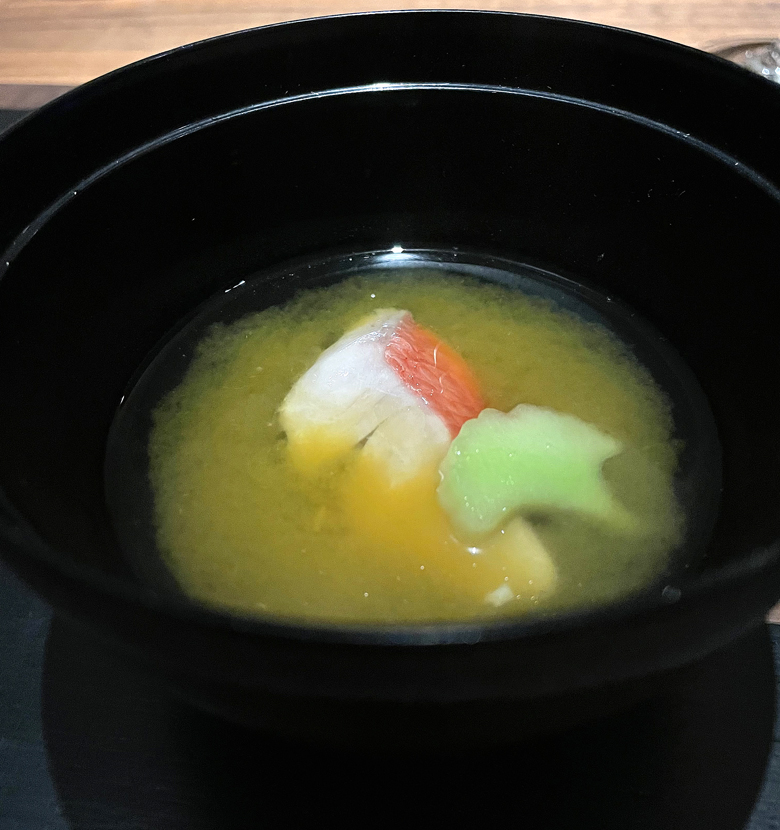
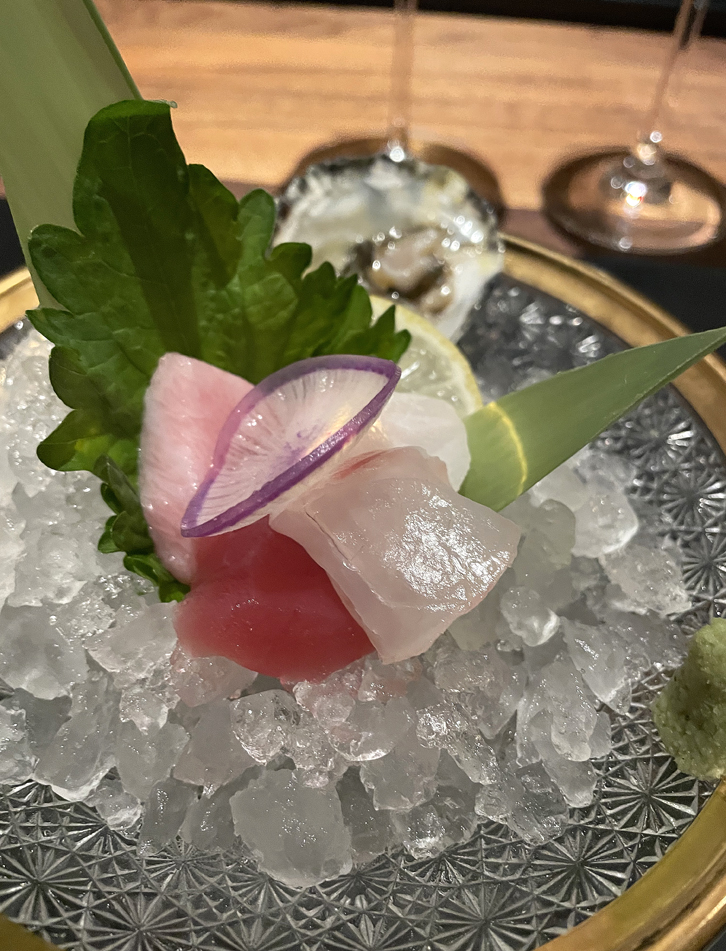
Sashimi followed with Thai sea bream, toro, and an oyster on the half shell with ponzu — all served over ice with a single shiso leaf, one of my favorite herbs, which you know I devoured, too.
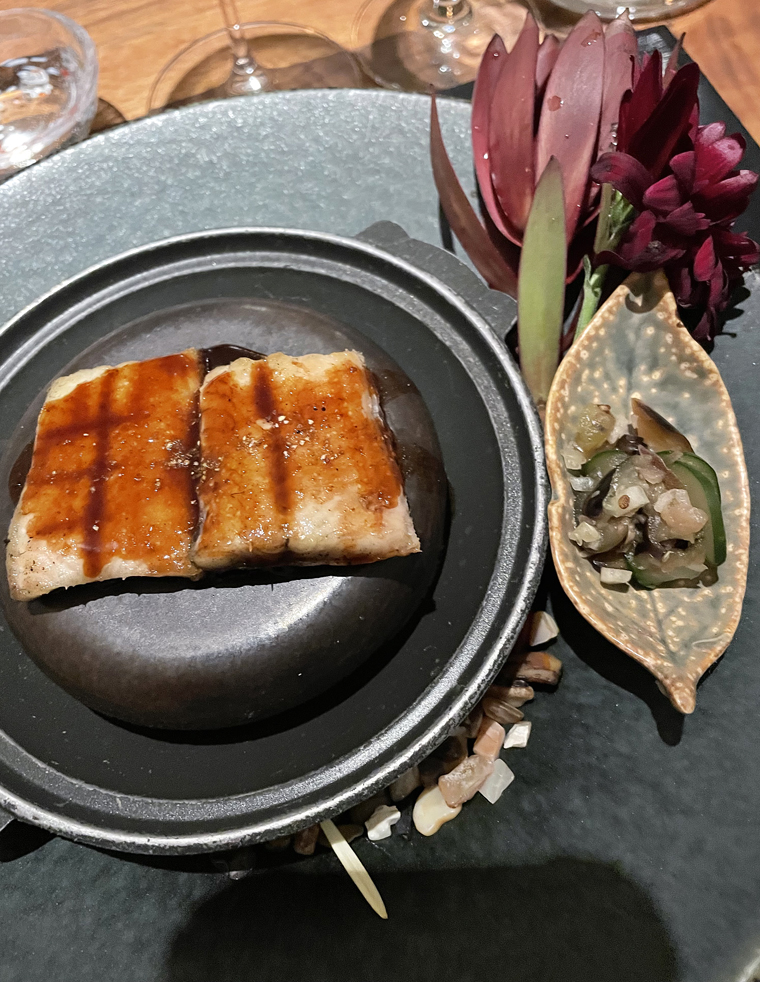
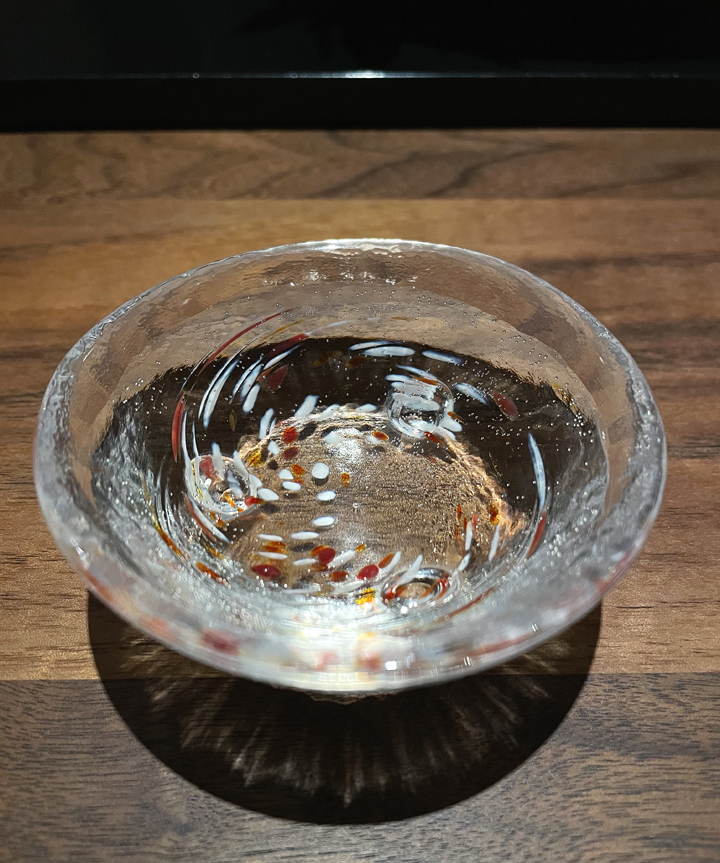
Yakimono or the grilled course came in the form of the richest, best tasting unagi I’ve ever had. While most eel is grilled with sauce, Nakayama prefers to grill it with just salt, allowing the true essence of the eel to shine, which it does spectacularly so. A smoked cherry blossom glaze is brushed on only after it comes off the grill, ensuring a wonderfully crisp skin, too. Finely diced pickled eggplant and cucumber are served alongside.
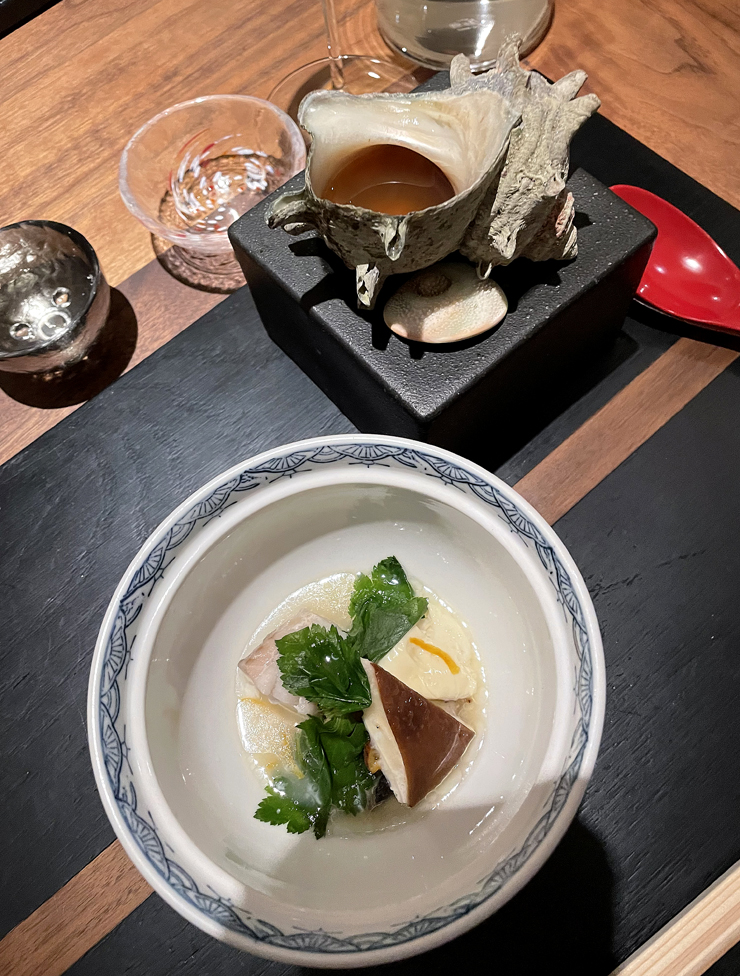
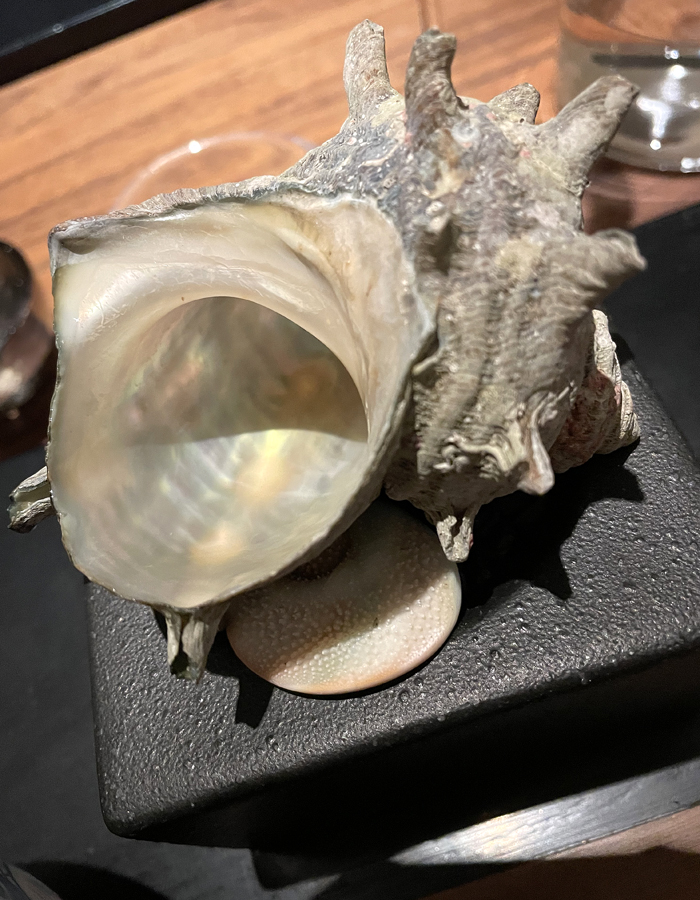
The steamed course consisted of black cod, shiitake, and sea snail arranged in a bowl. For added drama, its shell held the warm, deeply flavorful dashi made with its liver. Upend the shell and pour its contents into the bowl to enjoy every last drop of the restorative broth.
The next dish is a surprising one that never leaves the menu. People would rebel if it ever did. You’d never dream of spaghetti with black truffles as part of a kaiseki meal. But that is exactly what is set before you. Nakayama explained that when she dines, she loves to indulge in one really rich dish. This is definitely that, with supple house-made pasta twirled and stacked with abalone, pickled cod roe, and black truffle slices. It is creamy, cheesy, and full of umami. It’s the first time I’ve ever eaten pasta with chopsticks. I’d have licked the plate, if I could.
Intense, creamy shiitake puree plays up the meatiness of a rosy slice of A5 Wagyu that gushed with fatty juices. Chutney-like fig-miso sauce and fresh wasabi are on hand to add a burst of sweetness and floral heat to cut the richness.
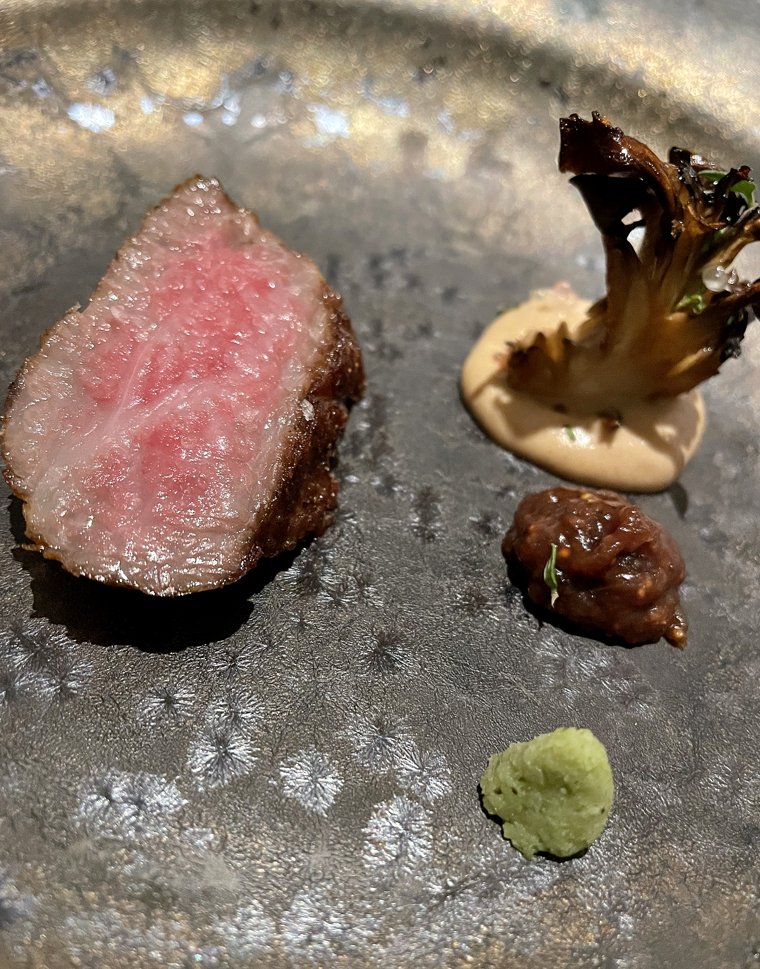
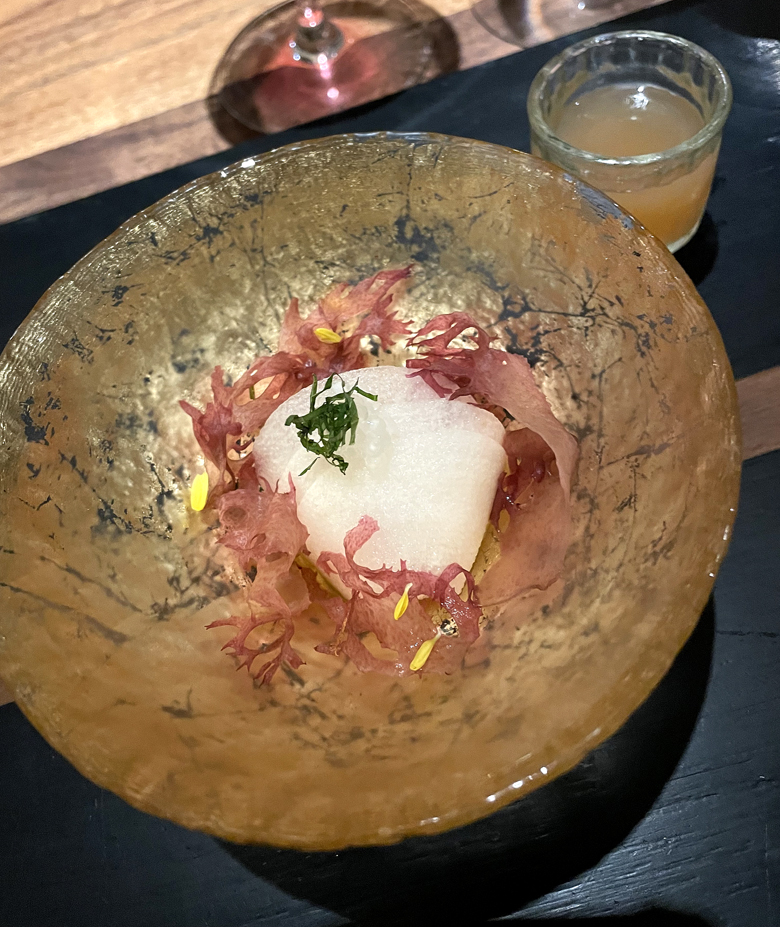
To cleanse the palate, there is the beguiling shinko pear and fuyu persimmon served with tapioca, ginger dashi, and pink seaweed. It’s a fresh, clean, and tangy dish with natural fruity sweetness along with a slight savoriness to signal that dessert isn’t quite on the way just yet.
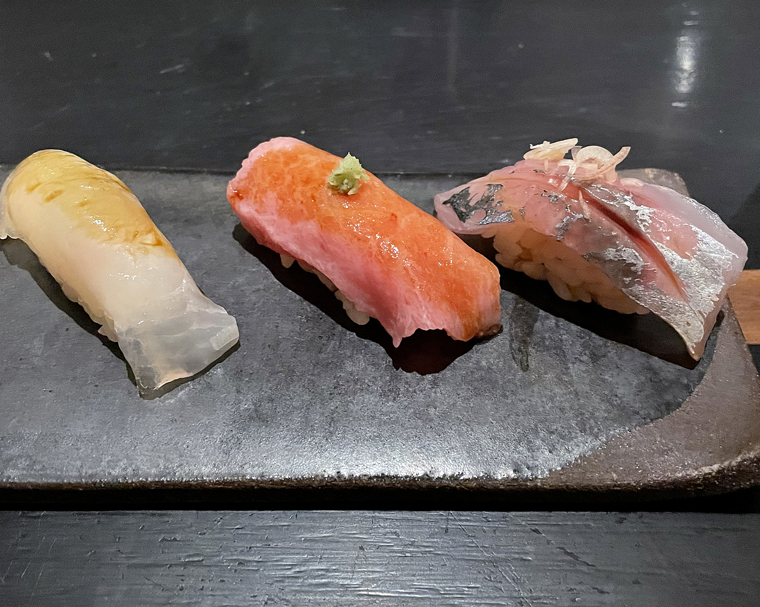
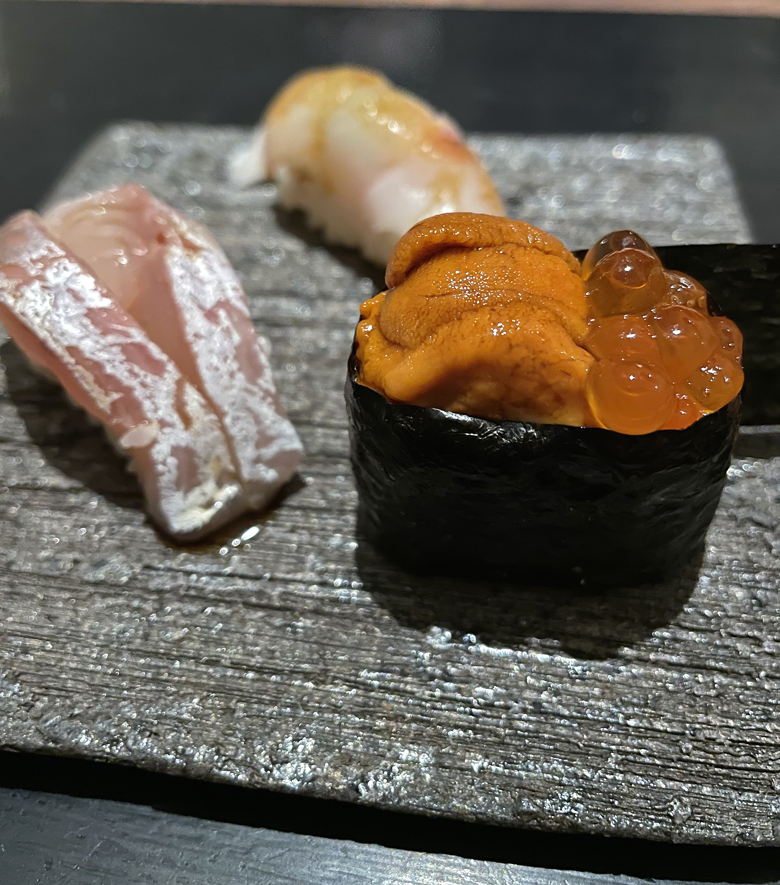
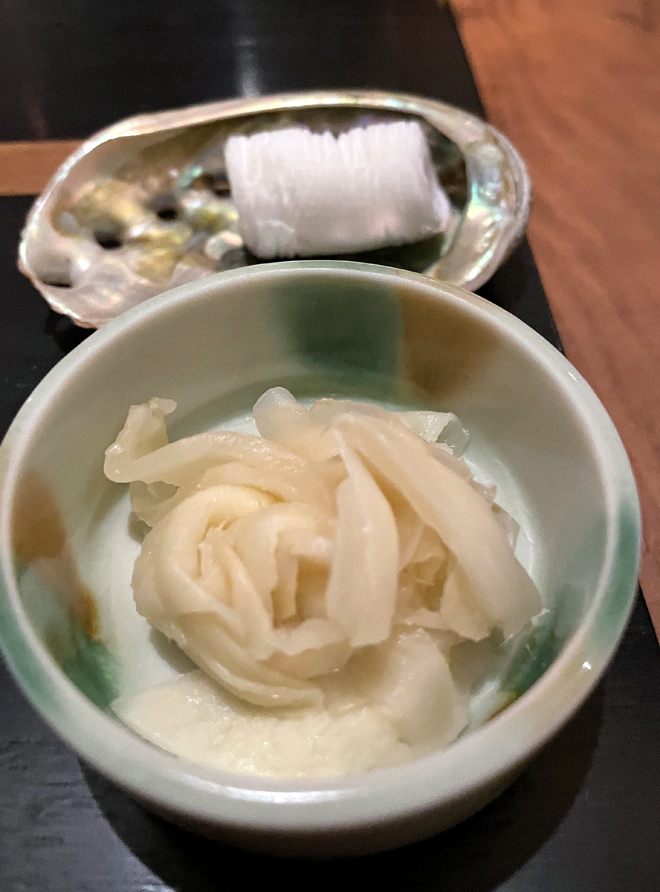
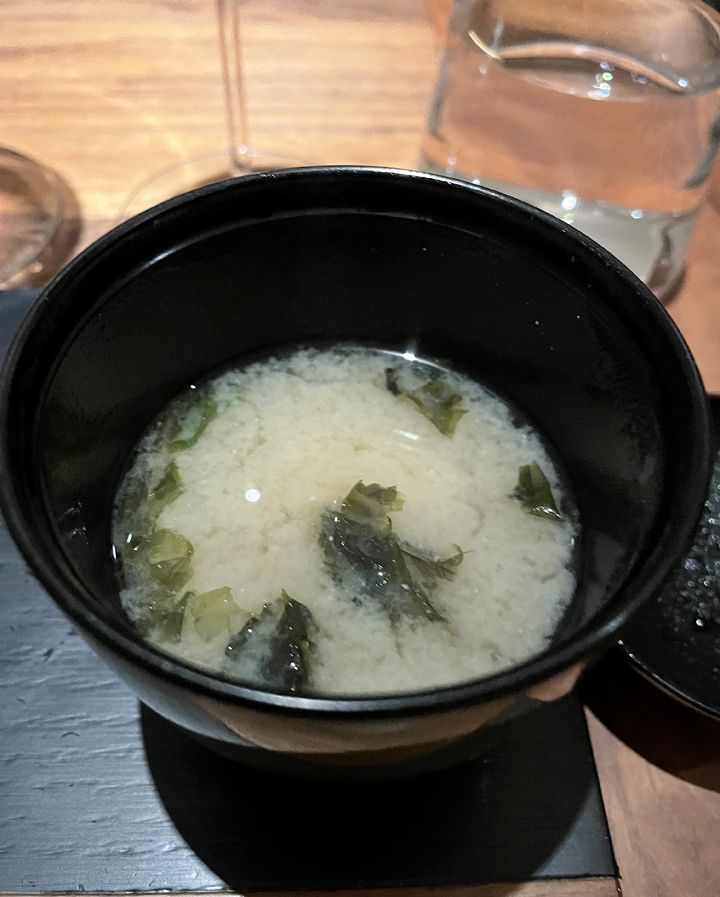
Indeed, nigiri sushi arrived next with chewy fluke, horse mackerel, and buttery toro. Miso soup and pickled ginger were at the ready whenever you feel inclined. Our server even replenished my ginger after seeing my insatiable appetite for it.
More nigiri followed with uni and salmon eggs; snow trout; and sea perch. You’re asked if you’d also like a blue crab hand roll, which of course, we did. I mean, does anyone every turn that down? Especially when it’s so fresh that the nori is still crisp, and the crab salad so creamy that it melds into the perfectly cooked rice?
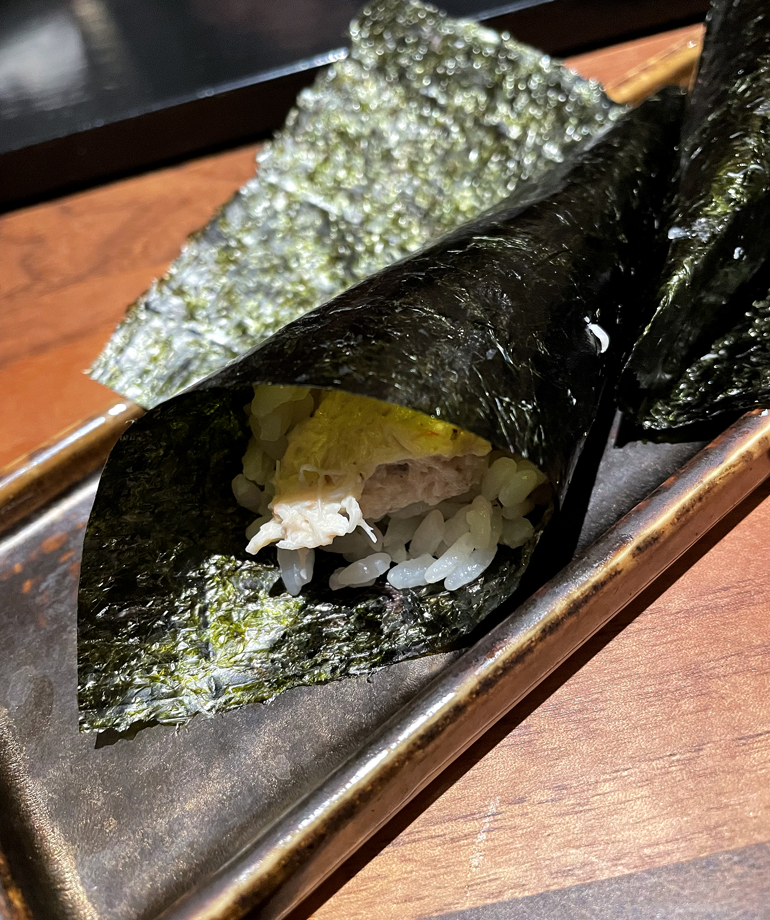
Mizumono or seasonal fruit dessert brought a bracing Granny Smith apple sorbet with sorrel, and shiso-yuzu granita.
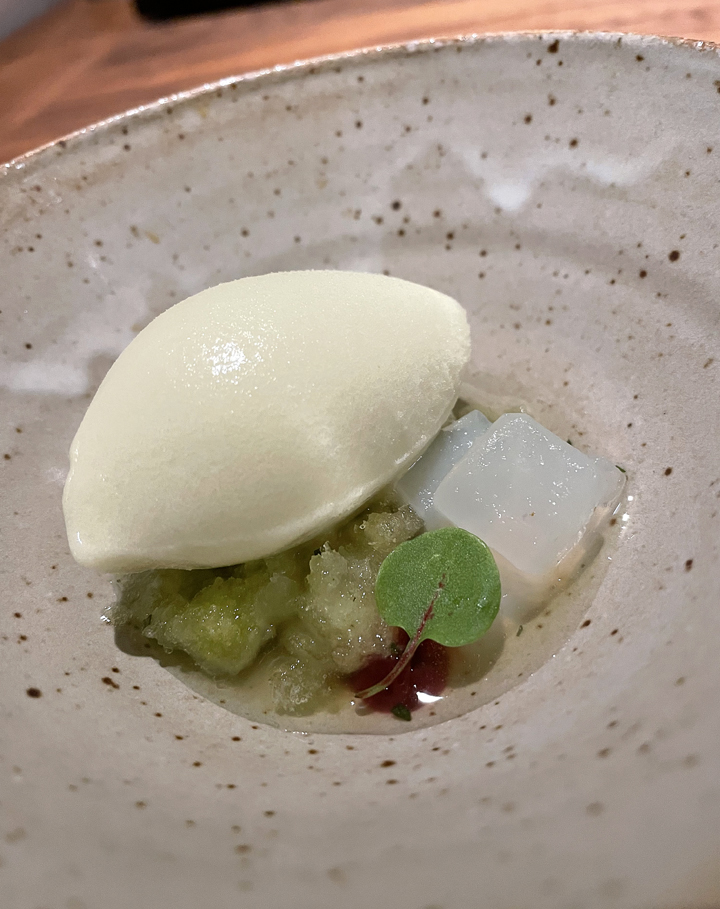
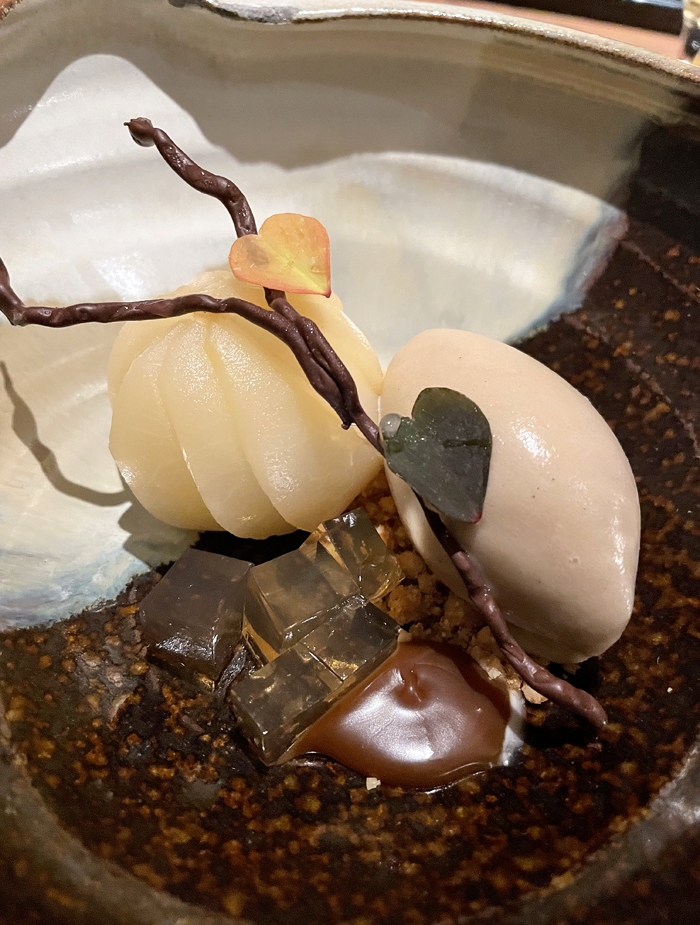
That was followed by a gorgeous Japanese still-life of Asian pear slices fanned into a sphere hiding a cake center alongside a quenelle of hojicha-vanilla bean ice cream. Coconut jelly squares, kinako crumble that tasted of chestnut, and a life-like chocolate branch, completed this gorgeous dish.

Then came mochi ice cream in the flavor of black sesame with raspberry coulis inside.
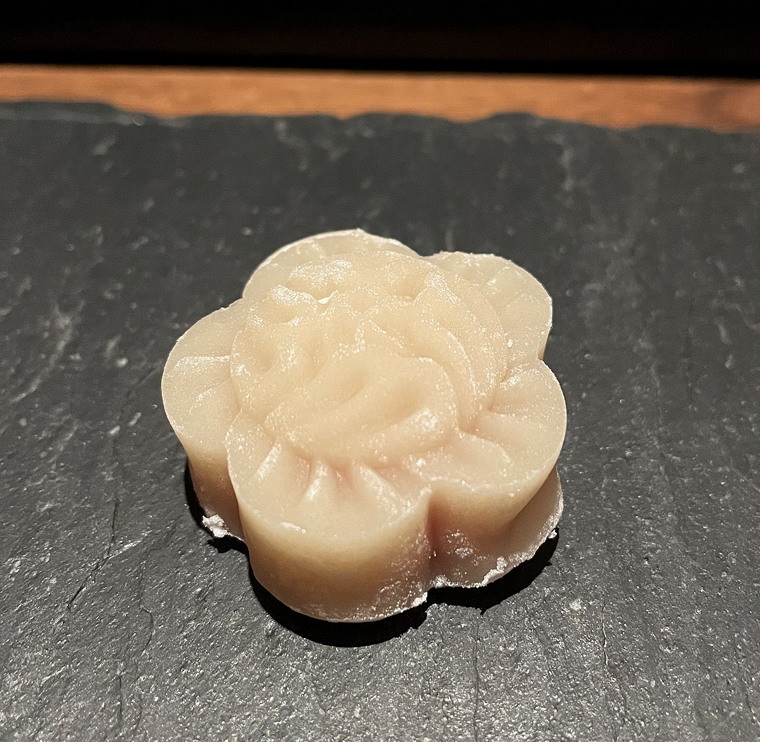
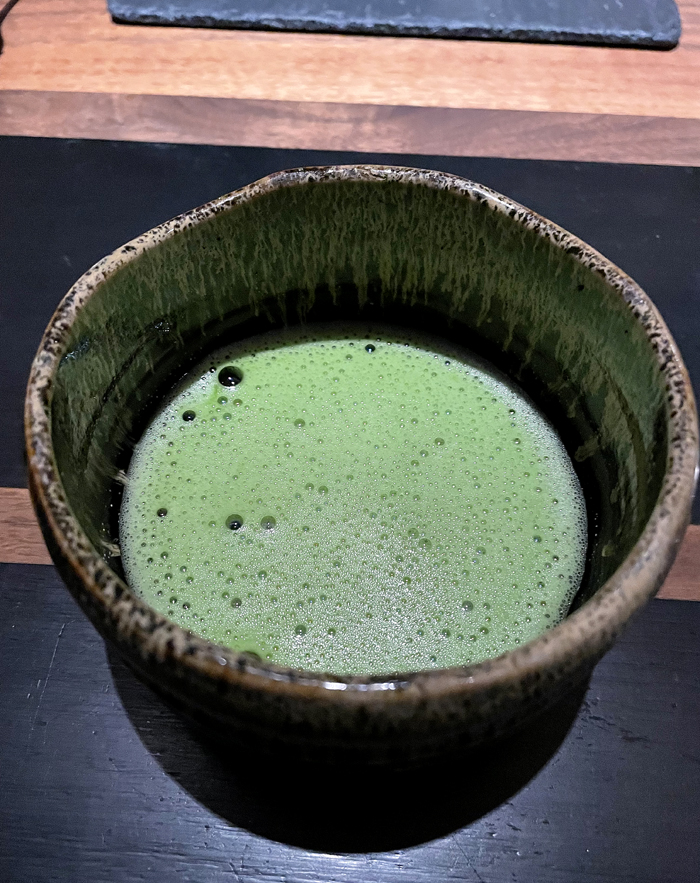
That was followed by a white bean and strawberry wagashi to accompany a frothy cup of matcha.
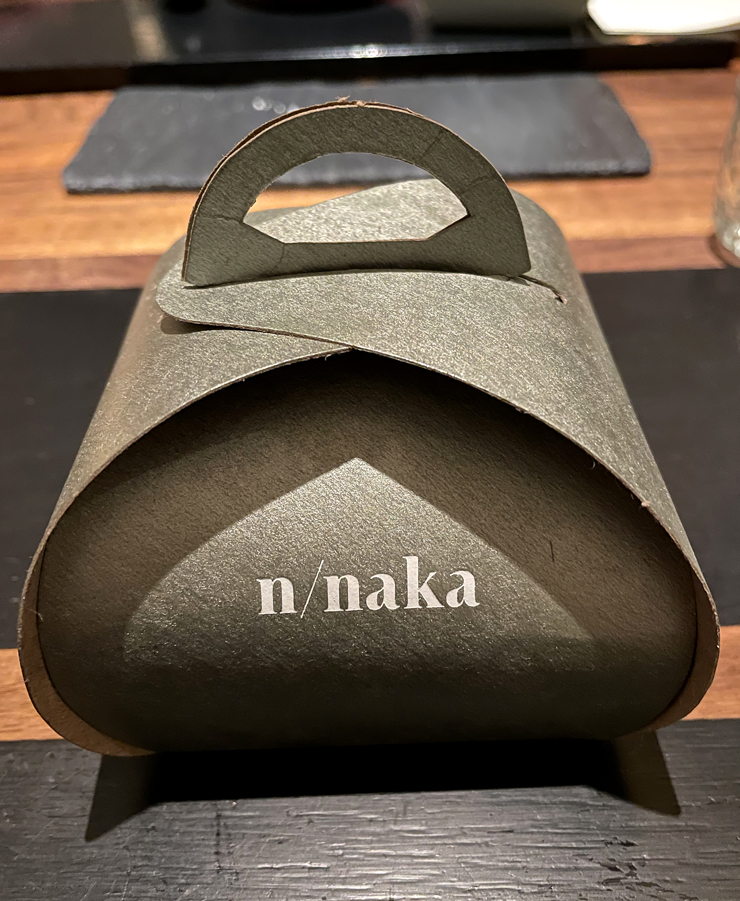
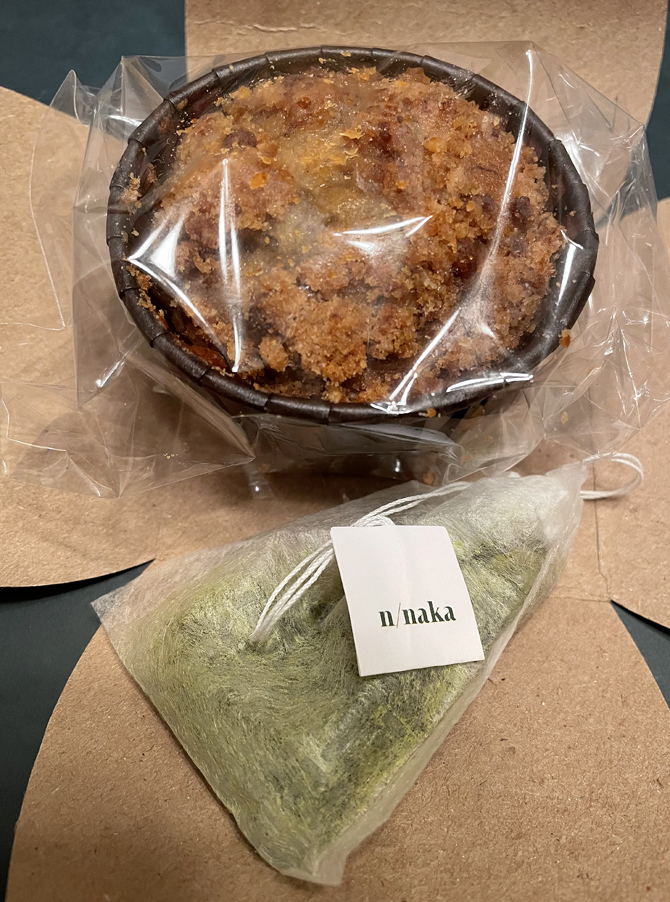
To bring home, there’s a neatly wrapped treat — a streusel-topped banana muffin to enjoy for breakfast the next morning. But that’s not all. Tucked inside to go with it is a bag of green tea. Because when it comes to going that extra attentive step, N/Naka transcends.

Beautiful description. I felt as if I were dining with you. Thank you.
Hi Terry: You’re very welcome. I feel very lucky that I managed to snag a reservation there. It really was a memorable meal. I hope you get to experience it yourself someday.